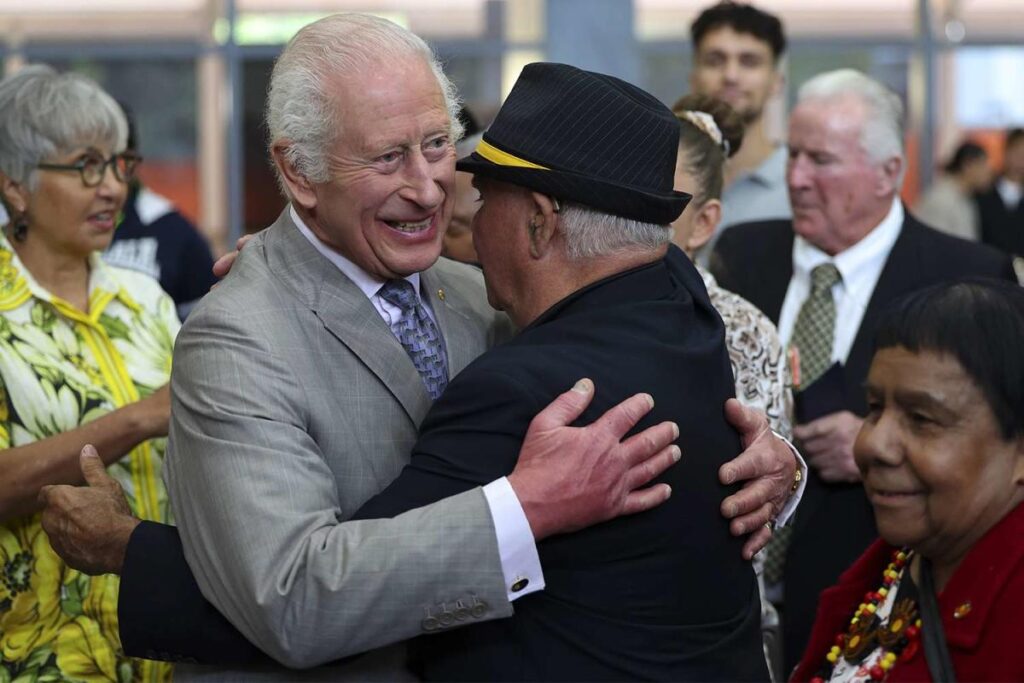King Charles and Queen Camilla concluded their visit to Australia on October 22, 2024, marked by a significant engagement with the indigenous community at the National Centre for Indigenous Excellence in Sydney. This visit came during a backdrop of ongoing protests regarding indigenous sovereignty and colonial impacts. The King’s scheduled meeting with indigenous leaders, including Uncle Allan Murray of the Metropolitan Local Aboriginal Land Council, was both a formal and symbolic gesture. Uncle Allan’s “Welcome to Country” highlighted the deep-rooted issues facing their community, emphasizing the desire for recognition and sovereignty. He articulated the ongoing struggle for autonomy, noting that indigenous people have never signed treaties acknowledging their rights to the land, which they believe was taken without consent.
During his encounter with community elders, King Charles was presented with the opportunity to engage in traditional cultural practices. Participating in a smoking ceremony organized by representatives of the Gadigal people of the Eora Nation, he demonstrated a willingness to connect with the indigenous culture on a personal level. The elder’s message resonated during this meeting, as he stressed the historical injustices faced by Aboriginal peoples, including their call for formal acknowledgment and reparative measures to address past wrongs. Charles appeared attentive, indicating a respectful recognition of their grievances and aspirations.
The day prior, King Charles faced a more confrontational atmosphere at Parliament House in Canberra, where he encountered vocal protests led by senator Lidia Thorpe. Her emphatic claims highlighted the ongoing disputes surrounding colonial histories, asserting that the actions of historical British leadership resulted in the genocide of indigenous people. As she was escorted from the premises, her persistent cries about the legitimacy of British claims to the land shook the parliamentary atmosphere. This incident underscored the heightened tensions surrounding notions of sovereignty and representation in contemporary Australia.
In addition to his meetings with indigenous leaders, King Charles engaged with medical professionals focusing on cancer research — a poignant reminder of his ongoing battle with the illness. This element of his itinerary, reflective of his personal health challenges, served to underline the medical community’s importance and the continuing advancements being made in cancer treatment. It illustrated the blend of royal responsibilities with personal experiences, connecting public health issues with broader societal contexts.
Throughout the day, King Charles and Queen Camilla also participated in a community barbecue hosted by the Premier of New South Wales, Chris Minns. Although the royal couple did not partake in the food served, their presence at the community event symbolized a commitment to fostering relations with the local populace. This event marked a lighter note amidst the more serious discussions about sovereignty and rights, bringing an element of community engagement to their official duties.
In summary, King Charles and Queen Camilla’s visit encapsulated a mix of ceremonial engagements and pressing contemporary issues in Australia. By recognizing indigenous voices and addressing their calls for sovereignty, the King positioned himself in a complex narrative of reconciliation between royal heritage and historical injustices. The juxtaposition of protest and engagement throughout their visit highlights the ongoing journey toward recognition and healing for Aboriginal communities, as well as Charles’s navigation of his royal role amid urgent social dialogues in Australia today.

